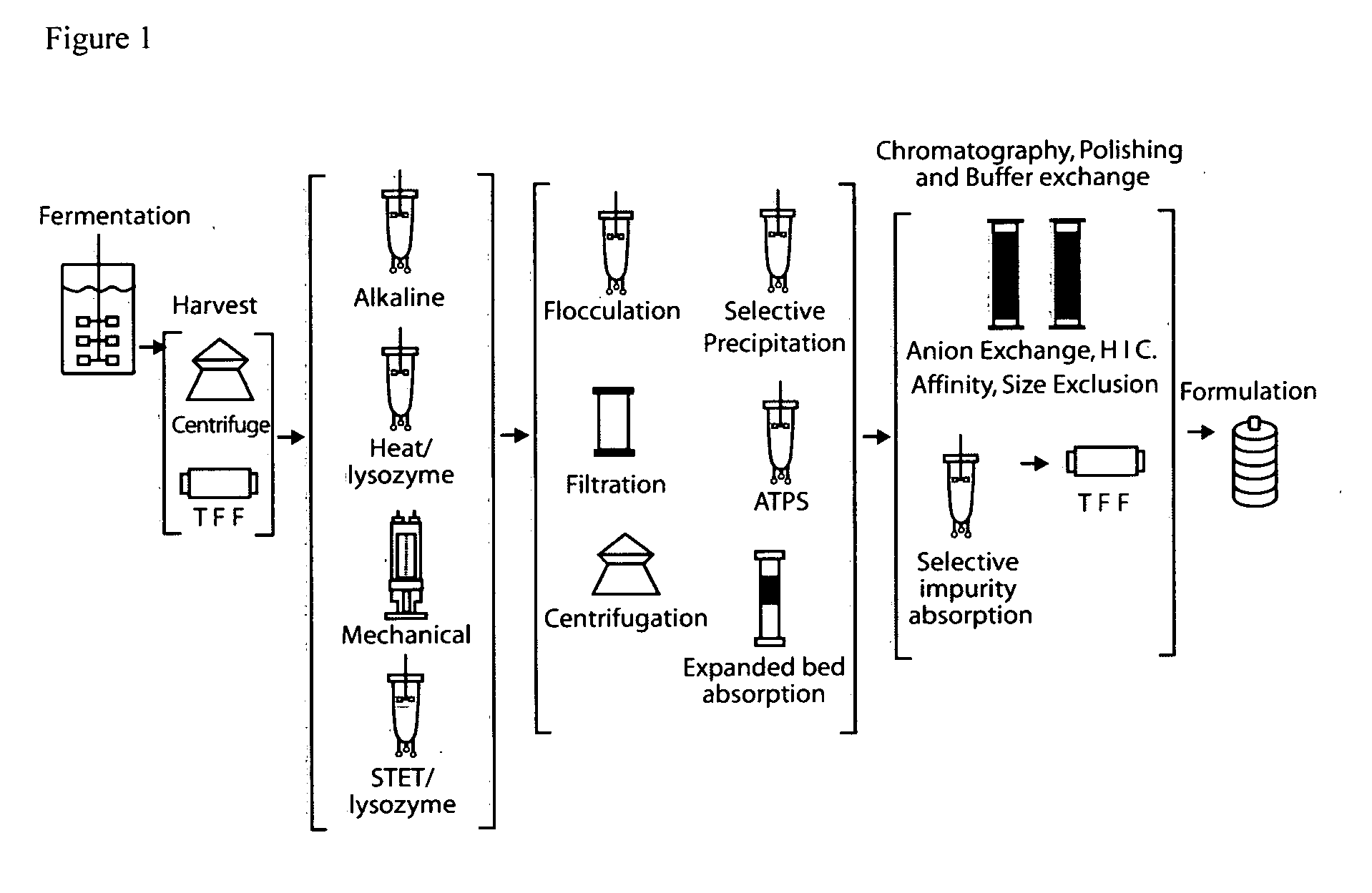E. coli plasmid DNA production
- Summary
- Abstract
- Description
- Claims
- Application Information
AI Technical Summary
Benefits of technology
Problems solved by technology
Method used
Image
Examples
example 1
Fermentation Process Optimization
[0141]Carnes and Williams, Supra, 2006 disclosed methods for fed-batch fermentation, in which plasmid-containing E. coli cells are grown at a reduced temperature during part of the fed-batch phase, during which growth rate is restricted, followed by a temperature up-shift and continued growth at elevated temperature in order to accumulate plasmid; the temperature shift at restricted growth rate improves yield and purity of plasmid (FIG. 4).
[0142]This process takes advantage of the temperature sensitivity of high copy number plasmids. In the preferred process, the initial temperature setpoint is 30° C., at which the plasmid is maintained stably at low levels while biomass can accumulate efficiently. During this period, the specific growth rate is controlled at approximately μ=0.12 h−1 by an exponential feeding strategy. Induction of plasmid accumulation is performed when the cell density is in the range of 25-60 OD600 by shifting the temperature to 42...
example 2
Seed Stock Process Optimization
[0145]Creation of seed stocks from transformations performed at 30° C., rather than 37° C., unexpectedly increased plasmid yield, productivity and seed stock viability.
[0146]Transformations were performed using either Z competent cells (Zymo Research, Orange Calif.) or electrocompetent cells using standard methodologies. Briefly, electrocompetent cells (in 10% glycerol) were electroporated with pDNA [one of three kanamycin resistant pNTCUltra DNA Vaccine plasmids containing influenza hemagglutinin (HA) genes from H1, H3 or H5 serotypes] using the BioRad (Hercules, Calif.) micropulser electroporator per manufacturers instructions (2.5 kV, 25 uF, 10052, 0.1 cm cuvette, 25 μL cells) and cells transferred to 0.5 mL SOC media in a falcon 10 tube. Transformed cells were outgrown by shaking 1 hr, and then plated onto Luria-Bertani (LB)+kanamycin plates. For Z competent cells, competent cells were made and transformed according to the manufacturers instruction...
example 3
Endolysin Strain Engineering
[0153]DH5α strains containing integrated inducible endolysin genes were constructed using chromosome engineering. Methods for chromosome engineering (insertion or deletion of genes) are well known in the art, for example, lambda red gam recombination (Murphy KC 1998 J. Bact. 180: 2063-2071; Datsenko K A, Wanner B L. 2000 Proc. Natl. Acad. Sci. (USA).; 97:6640-6645). Alternatively, replication incompetent plasmids can be site specifically integrated into the genome at bacteriophage attachment sites utilizing bacteriophage recombinase expressing plasmids. Plasmid kits, to allow integration at various bacteriophage attachment sites have been developed (Haldimann and Wanner J. Bacteriol. 2001: 6384-6393) and are generally available (E. coli genetic stock center, Yale N H). These methods are included herein by reference. For example, integration of a gene at the bacteriophage HK022 attachment site requires cloning a gene to be expressed into a modified integra...
PUM
| Property | Measurement | Unit |
|---|---|---|
| Temperature | aaaaa | aaaaa |
| Temperature | aaaaa | aaaaa |
| Time | aaaaa | aaaaa |
Abstract
Description
Claims
Application Information
 Login to View More
Login to View More - R&D
- Intellectual Property
- Life Sciences
- Materials
- Tech Scout
- Unparalleled Data Quality
- Higher Quality Content
- 60% Fewer Hallucinations
Browse by: Latest US Patents, China's latest patents, Technical Efficacy Thesaurus, Application Domain, Technology Topic, Popular Technical Reports.
© 2025 PatSnap. All rights reserved.Legal|Privacy policy|Modern Slavery Act Transparency Statement|Sitemap|About US| Contact US: help@patsnap.com



